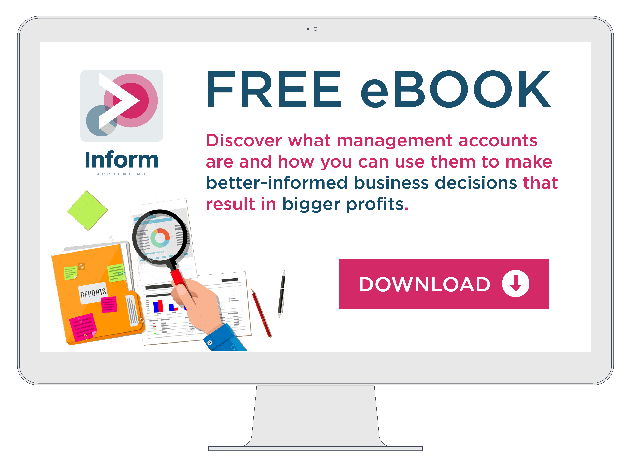BLOG
5 essential forecasts to improve your business decision-making

Financial forecasts provide an insightful glimpse forward and are an essential tool for any business. The growth, or simply the survival of your business largely depends on your ability to think ahead, predict and make decisions based on what the future may hold.
The importance of forecasting can not be underestimated. If you don't make this a standard process within your business, you will inevitabely make choices based on gut feel and guesswork. While your instincts may serve you well most of the time, it's a risky strategy. Just imagine how better those gut decisions could be with some accurate financial data to back them up. It could be the difference between increased profitability, choosing better customers to serve, hiring the right staff and seeing opportunities for new revenue streams.
Of course, prophesying the financial future of your business is no easy task - particularly at the start of your business journey when your trading history is minimal. At this stage, weekly forecasts may be necessary, regularly compared and adjusted against your actual statements to build a more accurate picture as your business evolves over time.
For more established businesses, monthly or quarterly forecasts may be sufficient. But for businesses both large and small, it’s vital to stay on top of the forecasting challenge. It might feel like there just aren’t enough hours in the day to dedicate time to forecasting, but it’s important to make the job a priority - not forgetting that if you really don’t have time, you can get your accountant to take care of it on your behalf. And don't forget, today’s cloud-based forecasting tools (such as Futrli), can automate much of the process for you, so you’ll never have to leave your core business activities for too long.
Why you need to forecast
Financial forecasts fuse your real-life data with predictive analytics to identify trends and patterns in your income and expenditure. It's a process that provides a powerful platform for decision making, allowing you to spot any potential sales slumps or busy periods before they occur.
With that insight, you can plan and prepare accordingly - for instance, stocking-up or raising prices to benefit from a likely rush, or ordering less stock to help limit the damage of a prospective quiet period.
If your financial health tends to rise and fall, and you just have that frustrating feeling that your business is never going to break through that 'glass ceiling', then forecasting may well be the answer. And the good news is five quick forecasts are all you really need to get started - all of which can make a significant difference to the quality of your decision-making.
5 essential areas to forecast regularly
1. Sales
Forecasting your sales is key to getting your stock, resource or staffing levels right throughout the year. For a new business with no sales data to look back on, this calculation can be tricky. Nevertheless, market research into average industry figures will be really helpful to set your initial benchmarks.
More established businesses should take into account previous sales data over the same time period, alongside current market conditions and the general economic climate.
Generally, two simple methods can be used to start forecasting sales: unit sales and margin sales. A unit sales forecast simply multiplies the number of units sold by the price per unit. A margin sales forecast - suitable for business using the same mark-up percentage on every product or service. You'll want to know what operating profit margins the top performers in your market are achieving to judge your own performance.
Depending on the industry you work in, sales forecasting could take a variety of other forms. Check out our industry pages, which provide a range of KPIs for each sector - some of these could help you with your sales forecasting model.
2. Overheads and expenses
While it’s easy to develop a preoccupation with sales figures, getting a handle on your expenditure is every bit as important. An expenses forecast helps to predict your costs over a period of time, taking into account seasonal fluctuations in marketing spend or end-of-year accounting and legal fees.
3. Profit & loss
Taking into account your sales and expenditure forecasts, a profit and loss forecast provides a peek into your potential future profits.
By predicting how much profit you expect to make, you’ll know how much money to set aside for tax liabilities - ensuring you’re never caught short at the end of the accounting year. More importantly, you'll have more certainty around the performance of your business, be able to plan for new investments (capital expenditure) and ensure you are living within your means when it comes to your own personal expenditure.
4. Cash flow
For many a small business, cash flow is king - and a cash-flow forecast is key to understanding when you’ll have surplus money in your account and when you won’t.
Usually projected over a 12 month timeframe, it can be used to focus on a much shorter period too, for instance to help navigate your business through a particularly lean time.
Conversely, when things are going well, a clear cashflow forecast could pinpoint the most suitable moment for you to start investing in a new service, product or team members.
5. Client growth rate (and churn)
Whether you’re running a product or service-based business, it’s crucial that your growth doesn’t depend on a small number of clients who you rely on to maintain or even increase their spend with you. Bringing new customers on board to supplement your existing client base will aways be important - especially if you have aggressive growth targets.
Forecasting and tracking the number of clients on your books will reveal whether your firm is expanding or contracting - helping you hit your targets, while ensuring you’re not churning more customers than you can afford to lose.
In summary:
Produced and assessed on a regular basis, these five forecasts alone can make a huge difference to the long-term sustainability of your business. The tools are available to automate much of the process, so you won't have to spend time messing around with different spreadsheets. Instead, you can easily pull together dashboards and reports that present a real-time snapshot of your key financial metrics. You'll be able to play out different scenarios and find out whether your bottom line might be best served by doubling down on stock, investing heavily in a marketing venture or keeping your cash in the business.
Ultimately, being disciplined about forecasting will help you make more informed decisions to ensure you steer your business in the right direction. It doesn't have to be a painful or time intensive process, if you put the right tools in place to help you.
Give us a call at Inform today for Business Growth Advice and how we can help with your future financial forecasts.
Read more of Inform's tax blogs:
How to set your small business payment terms
Pricing stories of small businesses
Tips for managing debtors when you're self-employed




.jpg?width=1500&height=1000&name=amy-hirschi-K0c8ko3e6AA-unsplash-(5).jpg)

